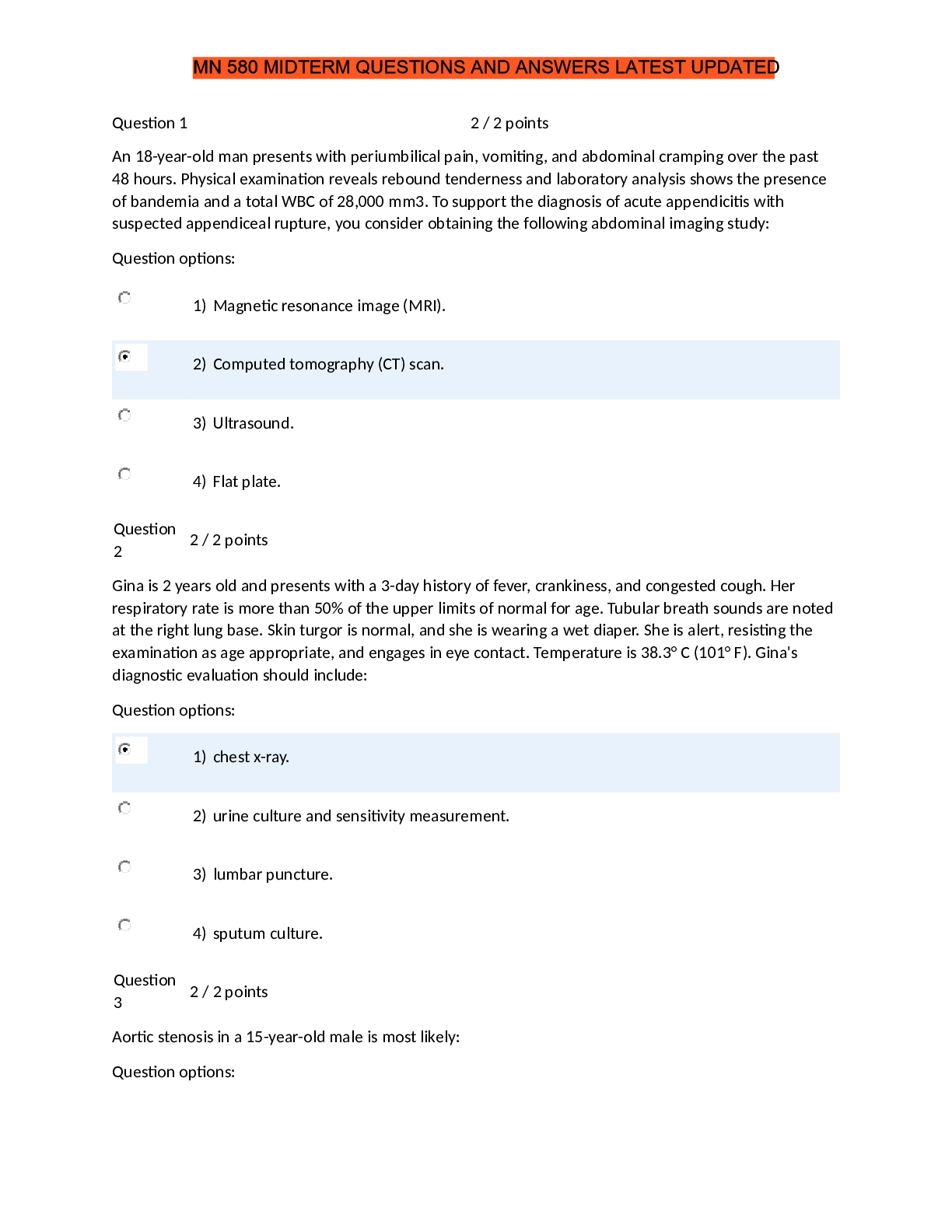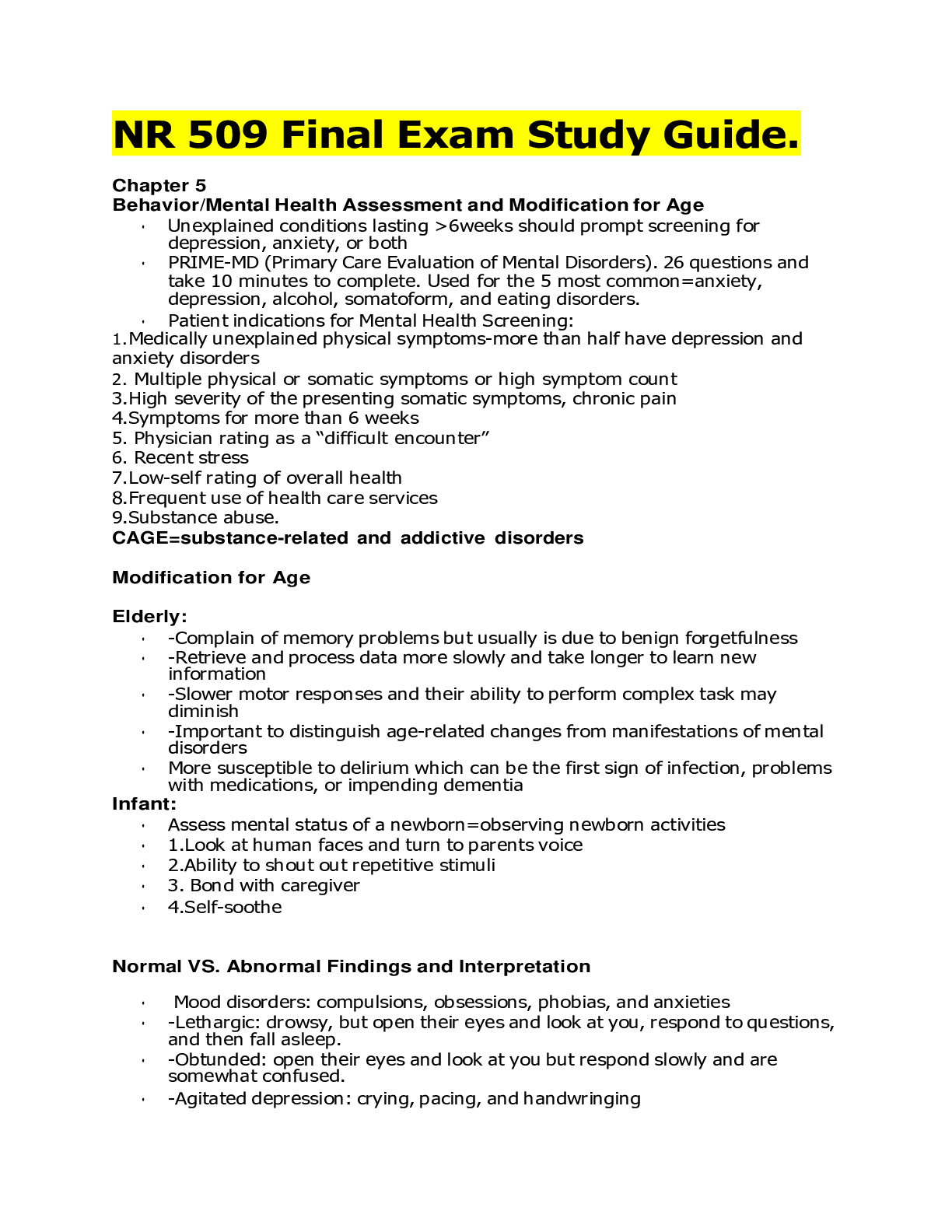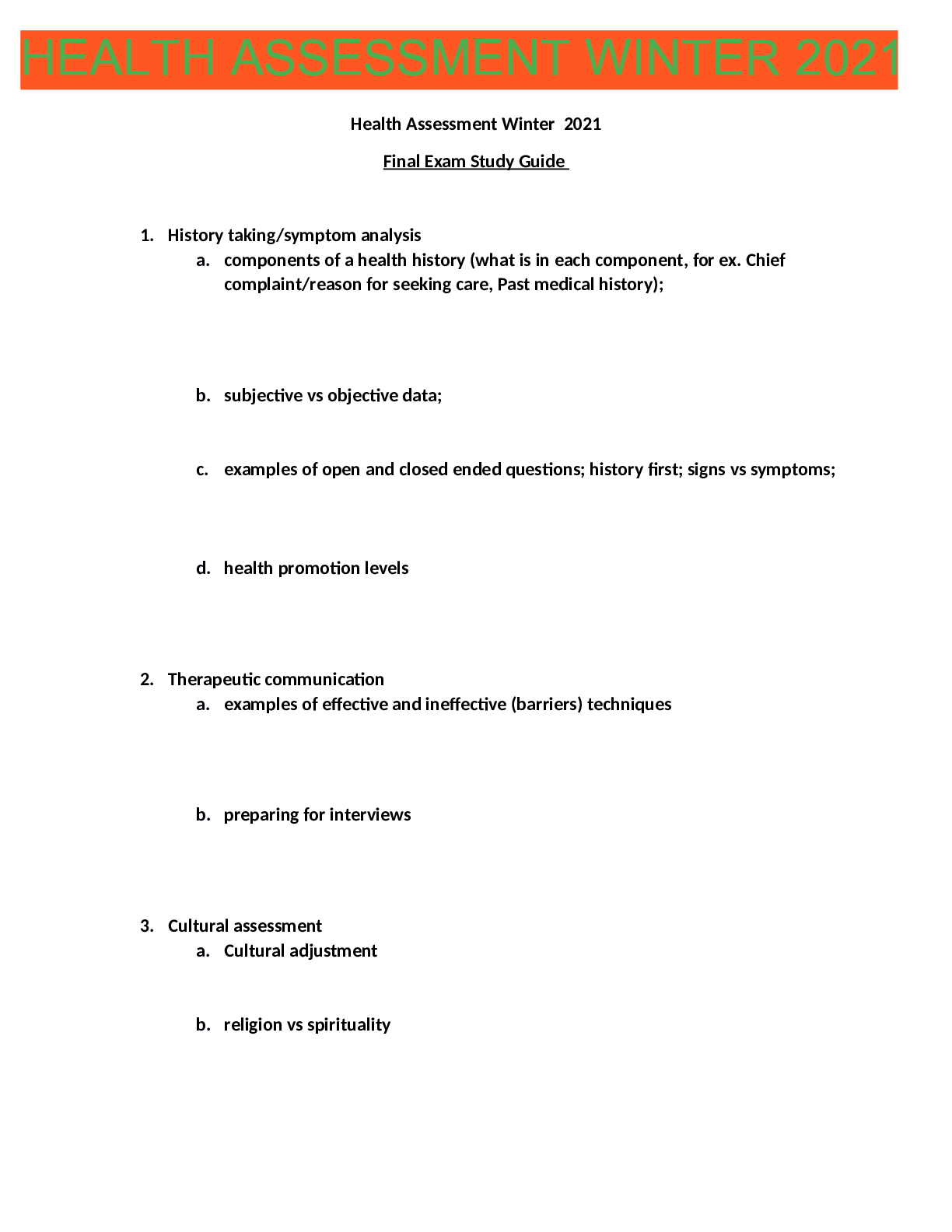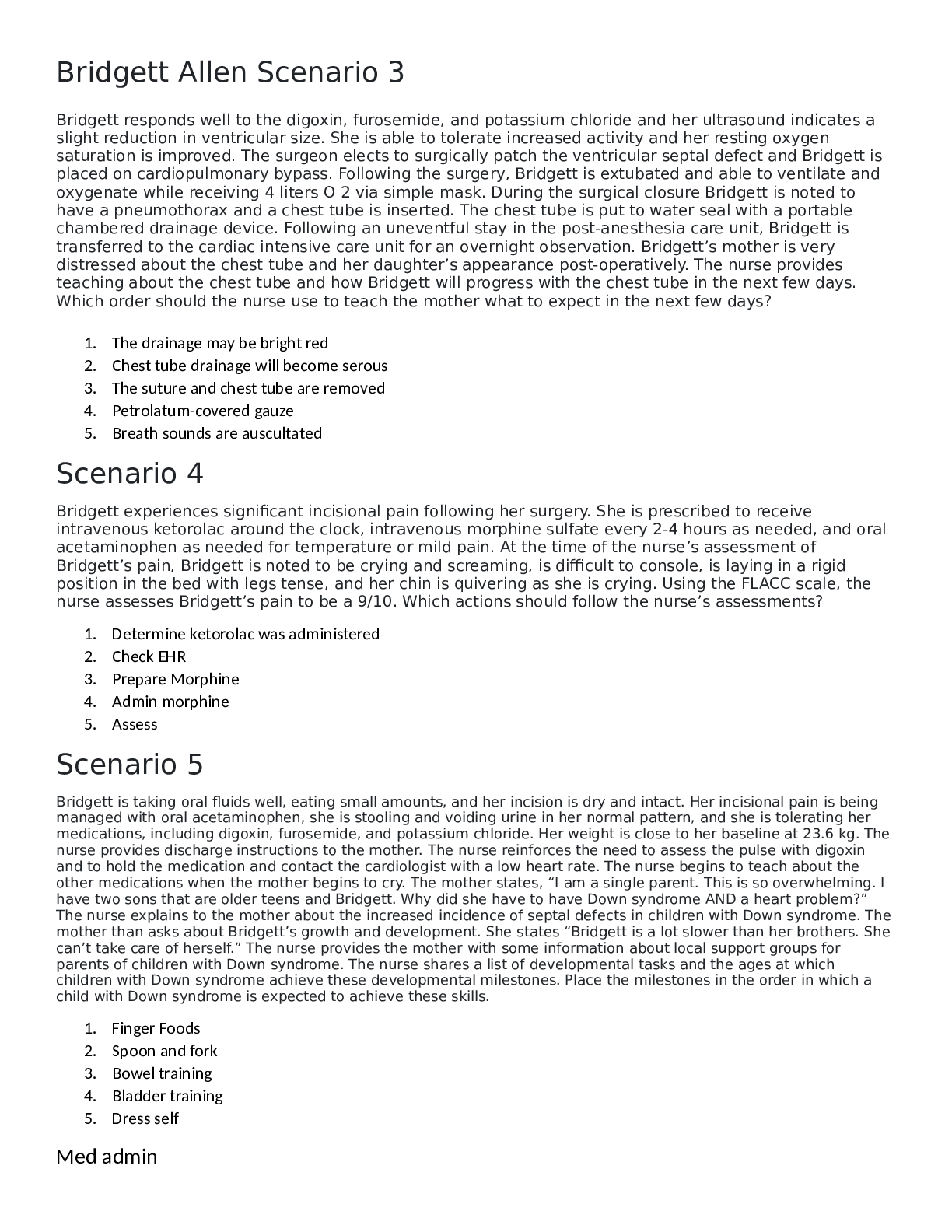*NURSING > STUDY GUIDE > MDCI STUDY GUIDE FINAL EXAMS (All)
MDCI STUDY GUIDE FINAL EXAMS
Document Content and Description Below
1. Scleroderma a. AKA systemic sclerosis b. Rare autoimmune connective tissue disorder c. Abnormal thickening of the skin d. Secondary Raynaud’s phenomenon can occur 2. Lupus a. 2 classificati... ons: i. Discoid (affects the skin) ii. Systemic (causes major body organs to fail) (has remission and exacerbations, causes direct damage and causes vasculitis which deprives organ of blood and oxygen) (Butterfly rash across the nose, nephritis, pericarditis, Raynaud’s phenomenon) b. Lupus nephritis is the leading cause of death for lupus because of the damage done to the kidneys 3. Rheumatoid arthritis a. Autoimmune inflammatory systemic disease of the synovial joints. CD4+ helper cells stimulate release of cytokine release, stimulates neutrophils to break down cartilage. Steroids 4. CREST Syndrome a. Multisystem connective tissue disorder b. Calcinosis c. Raynaud’s phenomenon d. Esophageal dysfunction e. Sclerodactyly (thickening and tightening of skin of fingers and hands) f. Telangiectasia (dilation of capillaries, red marks on surface on skin) 5. Reynaud’s a. Think of Elsa from Frozen (cold hands and feet); can’t get a pulse Ox because fingers are too cold b. Risk factors for primary Reynaud’s: sex, age, climate, family history c. Secondary Reynaud’s: happens as a result of another illness 6. Osteoarthritis a. Most common type of arthritis in the U.S. b. Results in bone rubbing against bone in the joint space causing joint pain and stiffness leading to decreased mobility and muscle atrophy c. Risk Factors: aging, genetic factor, obesity, trauma, occupation d. Treatments: NSAIDS, acetaminophen, other analgesics 7. Gout a. Systemic disease where urate crystals deposit in the joints and other body tissues b. Primary: inborn errors of purine metabolism with the end product uric acid c. Secondary gout hyperurcemia caused by another disease or factor d. Risk Factors: obesity, cardiovascular disease, alcohol, chronic kidney failure, starvation/dieting, trauma e. Education: avoid organ (red meats) or shellfish, limit alcohol intake, limit aspirins, and diuretics, remind pt to increase fluid intake f. Treatments: NSAIDs, corticosteroids, main medication= colchicine 8. Fibromyalgia a. Chronic Pain Syndrome b. Widespread musculoskeletal pain w fatigue, sleep, memory and mood issues c. Cause is unknown d. Risk dactors: sex (more prevalent in women than men), family history, more likely to develop if you have osteoarthritis, lupus, RH [Show More]
Last updated: 1 year ago
Preview 1 out of 8 pages

Buy this document to get the full access instantly
Instant Download Access after purchase
Add to cartInstant download
We Accept:

Reviews( 0 )
$9.00
Document information
Connected school, study & course
About the document
Uploaded On
Aug 30, 2021
Number of pages
8
Written in
Additional information
This document has been written for:
Uploaded
Aug 30, 2021
Downloads
0
Views
46









